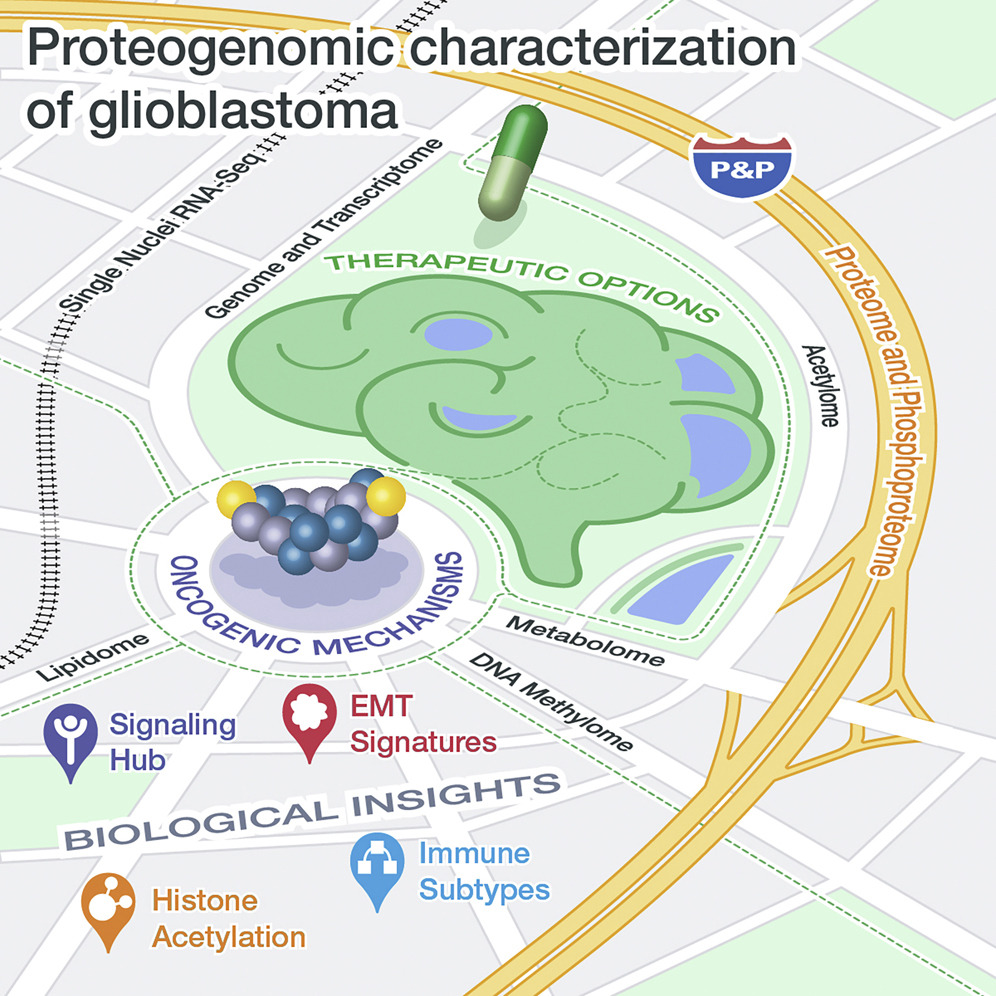Jurisdiction:
United States
Organ System:
Brain
Funding Organizations:
- National Cancer Institute, USA
- National Human Genome Research Institute, USA
- National Institutes of Health, USA
Research Organizations:
- Washington University in St. Louis, USA
- Pacific Northwest National Laboratory, USA
- Icahn School of Medicine at Mount Sinai, USA
- New York University School of Medicine, USA
- Broad Institute of MIT and Harvard, USA
- Brigham Young University, USA
- Baylor College of Medicine, USA
- Fred Hutchinson Cancer Research Center, USA
- Johns Hopkins University, USA
- University of Michigan, USA
- National Cancer Institute, USA
Principal Investigators
:- Li Ding
- Tao Liu
- Karin D. Rodland
External Links:
Glioblastoma (GBM) is the most aggressive nervous system cancer. Understanding its molecular pathogenesis is crucial to improving diagnosis and treatment. Integrated analysis of genomic, proteomic, post-translational modification and metabolomic data on 99 treatment-naive GBMs provides insights to GBM biology. We identify key phosphorylation events (e.g., phosphorylated PTPN11 and PLCG1) as potential switches mediating oncogenic pathway activation, as well as potential targets for EGFR-, TP53-, and RB1-altered tumors. Immune subtypes with distinct immune cell types are discovered using bulk omics methodologies, validated by snRNA-seq, and correlated with specific expression and histone acetylation patterns. Histone H2B acetylation in classical-like and immune-low GBM is driven largely by BRDs, CREBBP, and EP300. Integrated metabolomic and proteomic data identify specific lipid distributions across subtypes and distinct global metabolic changes in IDH-mutated tumors. This work highlights biological relationships that could contribute to stratification of GBM patients for more effective treatment.

